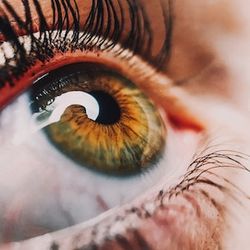
OR WAIT null SECS
Association Between Wearing Glasses, COVID-19 Infection Risk Inconclusive
Wearing glasses was inversely associated with COVID-19 in an unadjusted analysis, but the association did not remain when adjusting for confounders.
New findings on the association between wearing glasses and risk of COVID-19 infection are inconclusive.
Although wearing glasses was inversely associated with contracting COVID-19 in an unadjusted analysis in Sweden, investigators no longer identified an association when adjusting for confounders.
“While our analyses were inconclusive after adjusting for the available confounding factors, the possibility of an association remains a biologically plausible, safe, and inexpensive additional protection, which should be considered in disease-preventive strategies,” wrote study author Rasmus Gregersen, MD, Akutmodtagelsen, Bispebjerg Hospital, Ebba Lunds.
Prior research has helped establish that the eyes may be a non-negligible port of COVID-19 infection and eye-shielding personal protective equipment can protect against infection in risk settings. However, doubt remains on the protection of wearing one’s glasses against infection.
The post hoc prospective cohort study consisted of adults (≥18 years) who were employees at an international rescue corps (Falck), totaling 2024 participants in Denmark and 1248 in Sweden. Participants were tested biweekly for SARS-CoV-2 antibodies from June 2020 until August 2020.
Then, information on wearing glasses, reading glasses, or contact lenses was collected in December 2020 and January 2021 after the main data collection. Participants were required to report their job function and the mean number of individuals they encountered during workdays the last 2 weeks.
The association between wearing glasses and risk of COVID-19-postivie test result was investigated using logistic regression analyses and presented as odds ratio (OR; 95% CI). Investigators performed unadjusted analyses and 2 models of adjusted analyses: adjusted for age, sex, job function, and number of daily workdays contacts in stepwise inclusion.
Of the main cohort, investigators included 1279 employees (63.0%) in Denmark and 841 (67.4%) in Sweden who completed the complementary question on glasses wearing. From those included, 829 (64.8%) and 619 (73.6%) wore glasses in Denmark and Sweden, respectively.
The findings suggest fewer employees wearing glasses in the Swedish cohort tested positive (50 of 619 [8.1%]; 95% CI, 6.1% -10.5%) compared with nonusers (28 of 222 [12.6%]; 95% CI, 8.5% - 17.7%; OR, 0.61 [95% CI, 0.37 - 0.99]; P = .047).
Meanwhile, in Denmark, where the prevalence of COVID-19 was lower (2.4%), there was no protective effect observed in wearing glasses.
When adjusting for age, sex, number of workday contacts, and job function, data show no difference between employees who wore glasses and patents not wearing glasses (OR, 0.64 [95% CI, 0.37 - 1.11]; P = .11]).
The results suggest wearing glasses was both unadjusted and adjusted significantly and inversely associated with COVID-19 infection among office workers in Sweden, but not among other job functions.
The study, “Association of COVID-19 Infection With Wearing Glasses in a High-Prevalence Area in Denmark and Sweden,” was published in JAMA Ophthalmology.


